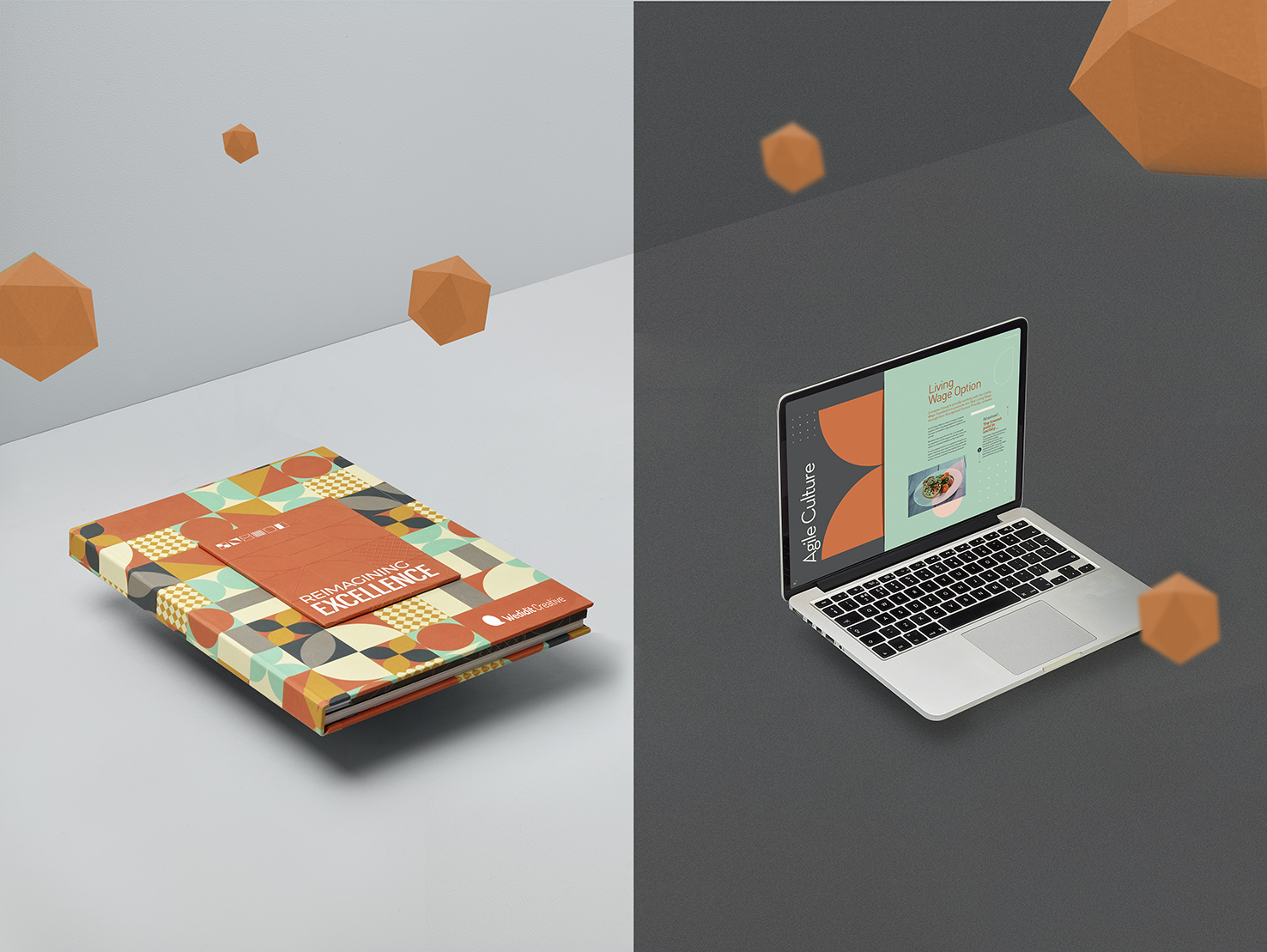Print vs Electronic Bid Submission: An Honest Discussion
25 May 2023
The perfect bid opportunity has arrived, and it's time to get the whole team onboard to prepare a must-win response. There are many factors to consider:
The perfect service that fits your client's requirements
The correct strategy
The approach

But what about the submission method?
Should you go for an electronic-only submission? A printed one? Or a combination of both?
Since the COVID pandemic, the answer to this question became rather automatic: electronic, right? Office closures due to sanitary restrictions meant that only electronic documents could reach people during those hard times, and this behaviour became embedded in most companies’ practices, along with their environmental responsibilities.
Electronic documents are the most sustainable and green solution aren’t they?
Let’s look back to 1436 when Johannes Gutenberg revolutionised the reproduction of books with the invention of the printing press. This fantastic invention allowed the rapid sharing of large amounts of information, vastly expanding our knowledge. The printing press is considered one of the greatest inventions of all time. However, our enthusiasm for printing materials led us to disregard the impact on our ecosystems. We depleted forests for paper production and polluted rivers during ink manufacturing. We soon realised that if we continued with these processes, we would irreversibly damage our environment. The printing industry had no choice but to change.
Fortunately, in recent decades, procedures in the printing industry have transformed, and they have implemented sustainable and efficient techniques. Recycling is widely available, and printed documents can be repurposed if necessary. The raw materials, especially paper, have also undergone significant changes. Trees are now purposefully grow and harvested from sustainable and strictly managed sources. When choosing paper from companies adhering to schemes like the Forestry Stewardship Council, the entire process can be traced from seed planting to the processing of wood fibres into paper. Modern manufacturing techniques have also reduced the need for excessive bleaching, and much of the process is now carbon-neutral.
Technology has revolutionised the way we work
While the printing industry was cleaning up its act, another technological leap was underway—the personal computer and, most importantly, Tim Berners-Lee’s invention, the internet. This new technology transformed the world, improving the way we live, communicate, and work.
Now we can chat with friends, colleagues, and family members across the globe in an instant. We can share dance videos on TikTok or cat pictures on Instagram, all whilst sitting next to someone or thousands of miles away. This technology also revolutionised the way we work, making us more efficient and productive than ever before. Which brings us back to the question:
Should I submit my documents printed or electronically?
The answer is not as simple as it may seem. Contrary to common perception, electronic documents are not inherently energy-efficient when considering their complete life cycle. Storing and accessing electronic files requires vast amounts of energy, primarily in the form of electricity.
Data centres and Cloud storage facilities
These house an ever expanding volume of digital data and operate 24/7 consuming significant amounts of power. Data centres and storage facilities worldwide contribute significantly to carbon emissions, and their energy requirements continue to escalate with the proliferation of digital content.
These demand substantial amounts of energy for processing, backup power supplies and networking equipment to ensure uninterrupted operation. The continuous growth in data storage necessitates the expansion of these facilities, further increasing their overall energy consumption. Consequently, the energy footprint of electronic documents is far from negligible
All these major facilities also require a substantial amount of water usage to cool down equipment often straining local water supplies and exacerbates water scarcity concerns. In addition the production of smartphones, tablets, and laptops relies on water-intensive manufacturing processes. From mining raw materials to assembly and manufacturing, the production of these devices contributes to water depletion and pollution.
Advantages and drawbacks
An electronic document can be deployed to multiple users simultaneously with a simple click. Recipients can choose to read the contents on a desktop computer or even on their mobile phones during their journey to and from work. Interactivity and rich media can make the experience immersive and live information can be fed into such documents. However, the experience can also feel impersonal, and challenges arise when running out of battery, compatibility issues with devices, or eye strain from excessive screen time.
On the other hand, a printed copy of your submission, or even just an executive summary, offers advantages such as the document always being available, never running out of battery, requiring special apps and software to open the document or causing technical issues when sharing such as the recipient either not having the software or the latest version to be able to open the file. Less tech-savvy clients may feel more comfortable marking up a physical document. The tactile experience of handling a tangible piece can convey a message of intent through the choice of materials and print finishings. This analogue experience can go a long way and have a positive impact on the client’s perception of your bid. Just like our appreciation for vinyl records, it’s not about nostalgia; it’s about the close user experience and feeling connected.
It’s clear that electronic documents and data storage centres need to clean up their act and may not be as environmentally friendly as we are made to believe. Likewise, producing a printed copy may take slightly longer and rely on courier services running on fossil fuels for delivery. It’s crucial for bid professionals to consider the entire process, including the final user experience, before choosing one method or the other, or perhaps even a combination. We must also be proactive and demand honesty from our suppliers, recognising that we all live and share the same planet Earth, and it is our responsibility to take care of it.
Our verdict
The printed document is still relevant. Under most circumstances, electronic documents do the job, but don’t be fooled into thinking it’s the more sustainable option. Printed documents still offer that additional impact, it is warm and easy to use. Combined with the right choice of materials it creates an experience and makes a lasting impression that is difficult to replicate on screen. So, depending on the situation, it’s important to still consider one or the other, and in some cases…both.
Author: Wedidit Creative


